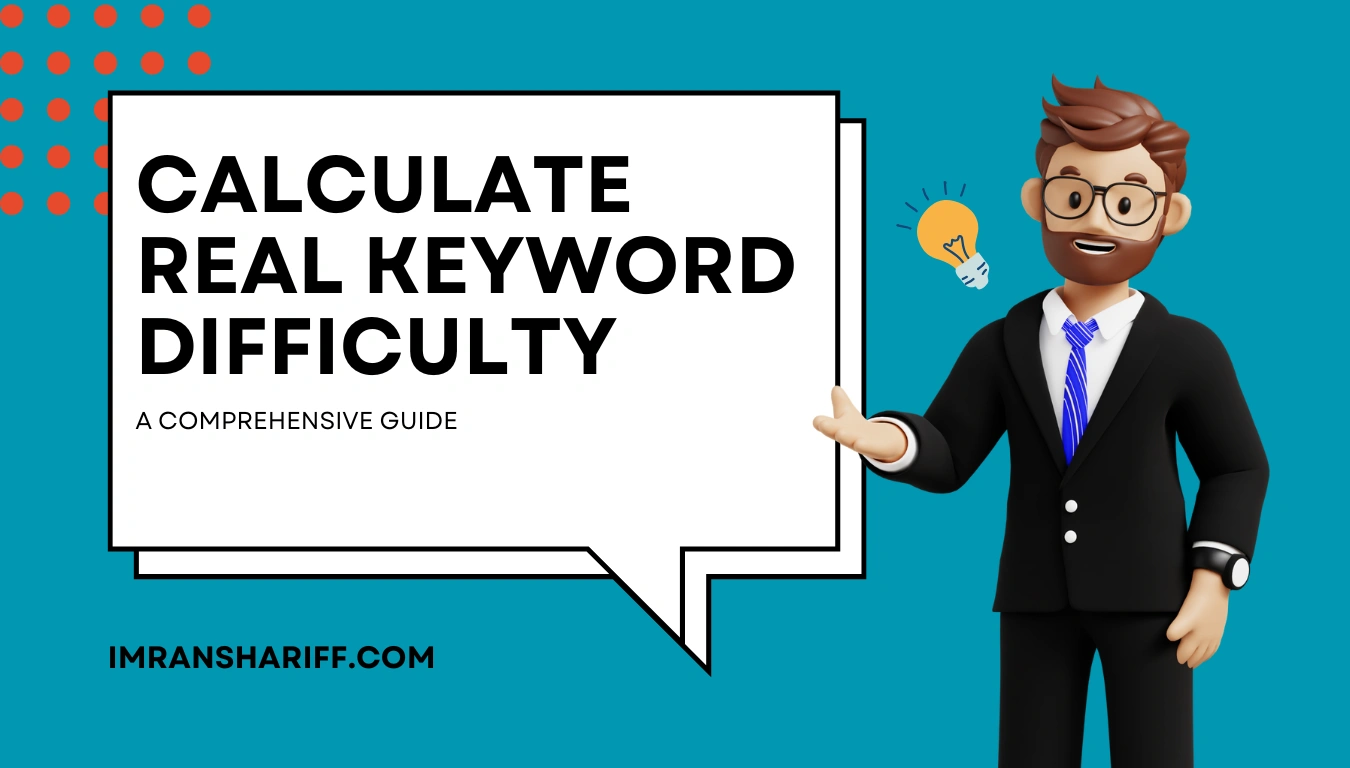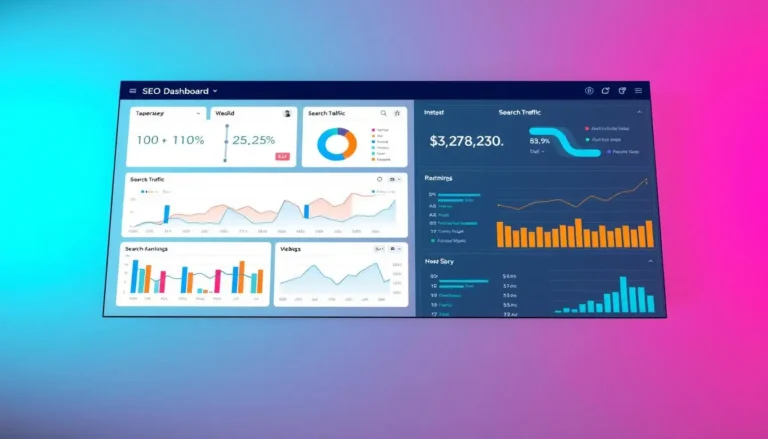How to Calculate Real Keyword Difficulty: A Comprehensive Guide

In the world of search engine optimization, I often wonder what makes a keyword hard to rank for. Is it the number of competitors, the quality of their content, or something else? To find out, I’ll use a keyword difficulty analyzer to understand the competition.

Keyword difficulty scores range from 0 to 100. Tools like Ahrefs, Moz, and SEMrush give different scores. It’s key to know what affects keyword difficulty, like backlinks and domain authority, to create a good content strategy. This helps improve my search engine rankings and boosts my seo competitiveness score.
Understanding Keyword Difficulty Fundamentals
Learning about keyword difficulty is key for keyword analysis. It helps pick the best keywords to improve your search engine ranking analysis.

What Makes Keywords Difficult to Rank For
Many things make a keyword hard to rank for. High search volume means more competition. This makes it tough to get to the top.
Also, the number of backlinks to top sites matters a lot. Keywords with brands or longer phrases are usually harder too.
The Role of Search Intent in Difficulty Scores
Knowing what users want is key to keyword difficulty. Keywords that match what users search for do better. Making your content match user intent can help you rank higher.
Key Metrics That Impact Difficulty
When looking at keyword difficulty, check these metrics:
- Domain Authority: Sites with higher authority are harder to beat.
- Backlink Profiles: The quality and number of backlinks affect difficulty scores.
- SERP Features: Things like featured snippets and ads raise competition.
The Science Behind Calculate Keyword Difficulty
Understanding keyword difficulty is key for a good SEO strategy. When I check keyword competition, I look at several factors. The SEO difficulty score is a key metric for this.
I use advanced keyword research tools like Semrush and Ahrefs. These tools look at top pages for a keyword. They consider domain authority and backlink profiles. For instance, Semrush’s Keyword Difficulty score looks at the number of referring domains and link types.
Search volume is also critical. Keywords with high search volumes have more competition. But, long-tail keywords with lower search volumes might be easier to rank for. They also attract more targeted traffic.
SERP analysis is also vital. By looking at search engine results pages, I see what content ranks well. This helps me create content that meets the user’s needs and matches the keyword difficulty.
Even with these tools, there are limits. Automated scores are a good start, but manual analysis is needed for a precise SEO plan.

Essential Tools for Measuring Keyword Competition
Choosing the right keyword analysis tool is key for your strategy. These tools help with ranking and analyzing competition. This makes your keyword evaluation accurate and effective.
Popular Keyword Research Platforms
Several well-known platforms offer top-notch keyword analysis tools:
- Semrush Keyword Magic Tool: Gives keyword difficulty scores, search volume, and historical trends.
- Ahrefs Keywords Explorer: Offers deep keyword analysis with backlink data and competition metrics.
- Google Keyword Planner: A free tool for basic keyword research and planning.
Free vs Paid Keyword Difficulty Tools
Free and paid tools have their benefits. Free tools like Google Keyword Planner are perfect for beginners and those on a tight budget. They provide essential data for keyword evaluation. Paid tools like Semrush and Ahrefs offer advanced features. These include detailed competition analysis, personalized difficulty scores, and access to vast data sets.
Choosing the Right Tool for Your Needs
When picking a keyword analysis tool, think about your budget, data needs, and expertise level. Free tools are great for beginners. But for detailed analysis and competitive insights, a paid tool is better.
| Tool | Features | Pricing | Best For |
|---|---|---|---|
| Semrush | Keyword difficulty scores, search volume, historical data, backlink analysis | Starts at $119.95/month | Comprehensive SEO strategies |
| Ahrefs | Extensive keyword database, backlink profiles, competitor analysis | Starts at $99/month | Advanced seo competition analysis |
| Google Keyword Planner | Basic keyword research, search volume metrics | Free | Beginners and small budgets |
Analyzing SERP Features and Their Impact
Understanding SERP features is key when looking at seo keyword difficulty. Elements like featured snippets and local packs can greatly affect your keyword ranking difficulty. They do this by changing how visible your content is in search results.
- Featured Snippets: Capture around 8% of organic clicks, making it challenging to secure top positions.
- Local Packs: Displayed for location-based searches, critical for businesses with physical locations.
- People Also Ask: Appear in 8.5% of US queries, giving users more questions and answers.
- Video Results: Take up a lot of SERP space, though present in about 6% of searches.
Using a good keyword research tool helps with a detailed keyword difficulty analysis. By looking at SERP features, you can see how competitive a keyword difficulty score is. This helps you find ways to make your content better.
Try to make your content answer the questions in People Also Ask boxes. Also, aim to get featured snippets by giving clear, short answers. Plus, improving your local SEO can get your business in local packs. This boosts your visibility in searches related to your location.
Advanced Metrics for Competition Analysis
To excel in seo keyword research, you need to look at advanced metrics. These metrics give you a full view of your competition. They help you improve your keyword optimization techniques.
Domain Authority Assessment
Checking domain authority is key. Tools like Semrush’s Authority Score rate a site’s ranking power from 1 to 100. Sites with higher scores are harder to beat for top keywords.
Backlink Profile Analysis
Looking at backlinks is important. You need to check the number, quality, and relevance of links to your competitors’ sites. A strong backlink profile boosts your keyword ranking analysis. Backlinks are a big part of keyword difficulty calculators.
Content Quality Evaluation
Creating high-quality content is vital for keyword optimization techniques. Your content should be relevant, in-depth, and engaging. Good content meets search intent and helps you rank better against others.
| Metric | Range | Impact on SEO |
|---|---|---|
| Global Difficulty | 31-53 | Shows how competitive a keyword is worldwide. |
| URL Difficulty | 19-73 | Indicates how tough it is to rank against specific URLs. |
| Domain Difficulty | 37-86 | Reflects the strength of domains competing for the keyword. |
| Content Difficulty | 27-73 | Measures the challenge of creating content that ranks well. |
By understanding these advanced metrics, you can improve your keyword ranking analysis. This lets you develop strategies that beat your competitors.
Creating Your Own Difficulty Score System
Creating a custom keyword difficulty score system lets you tailor your SEO strategy to your niche. You can use various factors to get a more accurate score that meets your goals.
First, figure out the key metrics that affect keyword difficulty. Use an SEO keyword research tool and a SERP analysis tool to collect data. Look at search volumes, backlink profiles, and domain authority. Then, decide how important each factor is for your website.
Here’s a simple way to make your system:
- Find important factors like search volume, backlink count, and domain authority.
- Give each factor a weight based on how much it matters to your site.
- Use a keyword difficulty score calculator to mix these factors into one score.
Keep doing organic search competition analysis to improve your scoring system. This helps your system stay effective as search engine rules and the market change.
By making your own difficulty score system, you get a better view of your keyword world. This lets you focus on keywords that are most likely to help you rank well and use your resources wisely.
| Factor | Weight | Description |
|---|---|---|
| Search Volume | 30% | Higher volume keywords may have more competition. |
| Backlink Count | 25% | More backlinks indicate higher difficulty. |
| Domain Authority | 20% | Stronger domains can rank more easily. |
| SERP Features | 15% | Presence of snippets or ads increases competition. |
| Content Quality | 10% | Higher quality content can improve ranking chances. |
Common Mistakes in Difficulty Assessment
Getting keyword difficulty right is key for your SEO plan. Steer clear of common errors to boost your keyword research and SEO success.
Overreliance on Single Metrics
Many focus too much on one seo tool metric, like Keyword Difficulty (KD). This overlooks important factors like backlinks and search intent. It leads to wrong guesses about how hard it is to rank in search results.
Ignoring Market Context
Not looking at the market context can mess up your keyword research. Knowing the strength of rival sites and the niche is key. It helps figure out how tough it is to rank for a keyword.
Misinterpreting Competition Signals
Reading competition signals wrong, like the number of referring domains, can lead you astray. It’s vital to get these signals right. This way, you avoid chasing after very competitive keywords that don’t fit your goals.
| Common Mistake | Solution |
|---|---|
| Relying on a single metric | Use multiple metrics for a complete analysis |
| Ignoring market context | Check the authority and relevance of competitors |
| Misinterpreting competition signals | Know the quality and relevance of backlinks |
Implementing Your Keyword Strategy Based on Difficulty Scores
Creating a good keyword SEO strategy means finding the right balance. You should aim for a mix of easy, medium, and hard keywords. This way, you can get quick results and keep growing over time.
Low Difficulty Keywords: Quick Wins
Going for keywords with a score under 30 can give you quick wins. These are easier to rank for, which is great if your site is new. Use a good keyword evaluation tool to find these chances. Then, make content that really meets what users are looking for.
Medium Difficulty: Balanced Approach
Keywords with a score between 30 and 60 need a balanced approach. You should make high-quality content and work on getting more backlinks. This will help boost your site’s authority. Keep an eye on your progress with regular SEO analysis and tweak your plan as needed.
High Difficulty: Long-term Strategy
Keywords with scores over 60 need a long-term strategy. You should focus on making detailed content, building strong backlinks, and improving your site’s authority. Being patient and keeping at it will help you rank better against tough competitors.
Conclusion: Mastering Keyword Difficulty Analysis for Better SEO Results
Understanding keyword difficulty is key to better SEO. Using a keyword planner helps find good opportunities for your site. This way, you can use your site’s strengths to your advantage.
Looking at search volume and using long-tail keywords can boost your rankings. These keywords have less competition. This makes it easier to get more organic traffic and keep people engaged.
It’s important to mix automated tools with manual checks. Tools like SEMrush and Ahrefs give great insights. But, checking things yourself helps make strategies fit your needs better.
Keeping an eye on how your keywords are doing lets you change your approach as needed. This way, you use your resources wisely and make better choices.
As you get better at handling keyword difficulty, focus on quality content and keep up with SEO trends. Doing this will help you overcome obstacles and keep growing organically.







